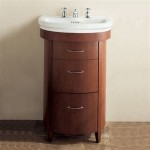How to Change a Bathroom Sink Drain Plug
A malfunctioning bathroom sink drain plug can be a nuisance, leading to slow drainage or even complete blockage. Fortunately, replacing the drain plug is a relatively straightforward task that most homeowners can handle with a few basic tools and some patience.
Tools and Materials Required
Before beginning, gather the necessary tools and materials. This will ensure the process goes smoothly and avoids interruptions. Here's what you'll need:
- Basin Wrench
- Pliers (Channel-Lock or slip-joint)
- Screwdriver (Flathead)
- New Drain Plug Assembly (Pop-up or Push-and-Seal)
- Plumber’s Putty (Optional)
- Old Towels or Rags
- Bucket or Container
Preparing the Work Area
Preparation is crucial for any successful plumbing project. The following steps will ensure a cleaner, more efficient process:
- Place old towels or rags under the sink to catch any spills or dropped parts.
- Clear the area around the sink for easy access.
- Place a bucket or container under the P-trap to catch any residual water.
Removing the Old Drain Plug
Removing the old drain plug requires careful attention to the existing plumbing components. Follow these steps to safely remove the old assembly:
- Locate the pivot rod, a thin metal rod connected to the drain lever behind the faucet. Disconnect it from the drain linkage.
- Using a basin wrench, loosen and remove the nut connecting the drain flange to the sink basin. This nut is located underneath the sink.
- Loosen and remove the nut securing the drain body to the tailpiece underneath the sink.
- Carefully remove the entire drain assembly from the sink.
Cleaning the Sink Drain Opening
Once the old drain is removed, it's essential to clean the sink drain opening. This ensures a proper seal with the new drain plug assembly and prevents future leaks:
- Remove any old plumber's putty or sealant residue from around the sink drain opening.
- Thoroughly clean the drain opening with a rag to remove any debris or buildup. A clean surface is crucial for a watertight seal.
Installing the New Drain Plug Assembly
Installing the new drain plug is the most important step. Careful adherence to these instructions will ensure a leak-free and functioning drain:
- If required, apply a thin, even bead of plumber's putty around the underside of the new drain flange.
- Insert the new drain flange into the sink drain opening, pressing down firmly to create a seal.
- Secure the drain flange to the sink basin with the nut using the basin wrench. Do not overtighten.
- Connect the drain body to the tailpiece underneath the sink and tighten the nut.
- Reconnect the pivot rod to the new drain linkage.
Testing the New Drain Plug
After installation, it is essential to test the new drain plug to ensure it is functioning correctly and there are no leaks. This final check will confirm the success of the replacement:
- Run water into the sink, observing for any leaks around the drain flange or connections underneath the sink.
- Test the pop-up or push-and-seal mechanism of the new drain plug to ensure it opens and closes properly.
- If any leaks are detected, tighten the connections as necessary or reapply plumber’s putty if needed. Retest after adjustments.
Maintaining Your Bathroom Sink Drain
Regular maintenance will help prevent clogs and ensure the longevity of your bathroom sink drain. A few simple steps can keep your drain functioning smoothly:
- Avoid pouring grease or oil down the drain.
- Use a strainer to catch hair and other debris.
- Periodically flush the drain with hot water to prevent buildup.
Troubleshooting Common Issues
Sometimes, even with careful installation, issues can arise. Here are a few common problems and how to address them:
- Leaks around the flange: Check for cracks in the sink or flange. Tighten the nut securing the flange or reapply plumber's putty.
- Slow draining: Remove the drain plug and clean any debris. Check the P-trap for blockages.
- Pop-up stopper not sealing: Adjust the clevis screw or replace the stopper if damaged.
Different Types of Drain Plugs
Understanding the different types of drain plugs can help you choose the right replacement for your sink:
- Pop-up Drain Plug: Operated by a lever behind the faucet, this is the most common type.
- Push-and-Seal Drain Plug: Sealed by pushing down on the stopper and opened by pushing again. Simpler mechanism than a pop-up drain.
- Grid Drain: A stationary drain cover without a stopper. Used primarily in showers and tubs, but occasionally in sinks.

How To Replace A Rusty Sink Drain Howtolou Com

How To Fix A Bathroom Sink Drain Stopper 4 Easy Solutions

How To Replace A Sink Stopper Quick And Simple Home Repair

How To Fix Pop Up Drain Waste Plug

How To Replace A Pop Up Sink Drain Remove The Old Bathroom Stopper Repair

How To Remove A Bathroom Sink Stopper Take Out Pop Up Drain From

Quick Tip 26 Pop Up Stopper Sticks Misterfix It Com

How To Fix Or Maintain Your Sink S Pop Up Mechanism

How To Replace A Drain In The Bathroom Sink Right Way
Install A Drain Stopper So The Is Removable
Related Posts







